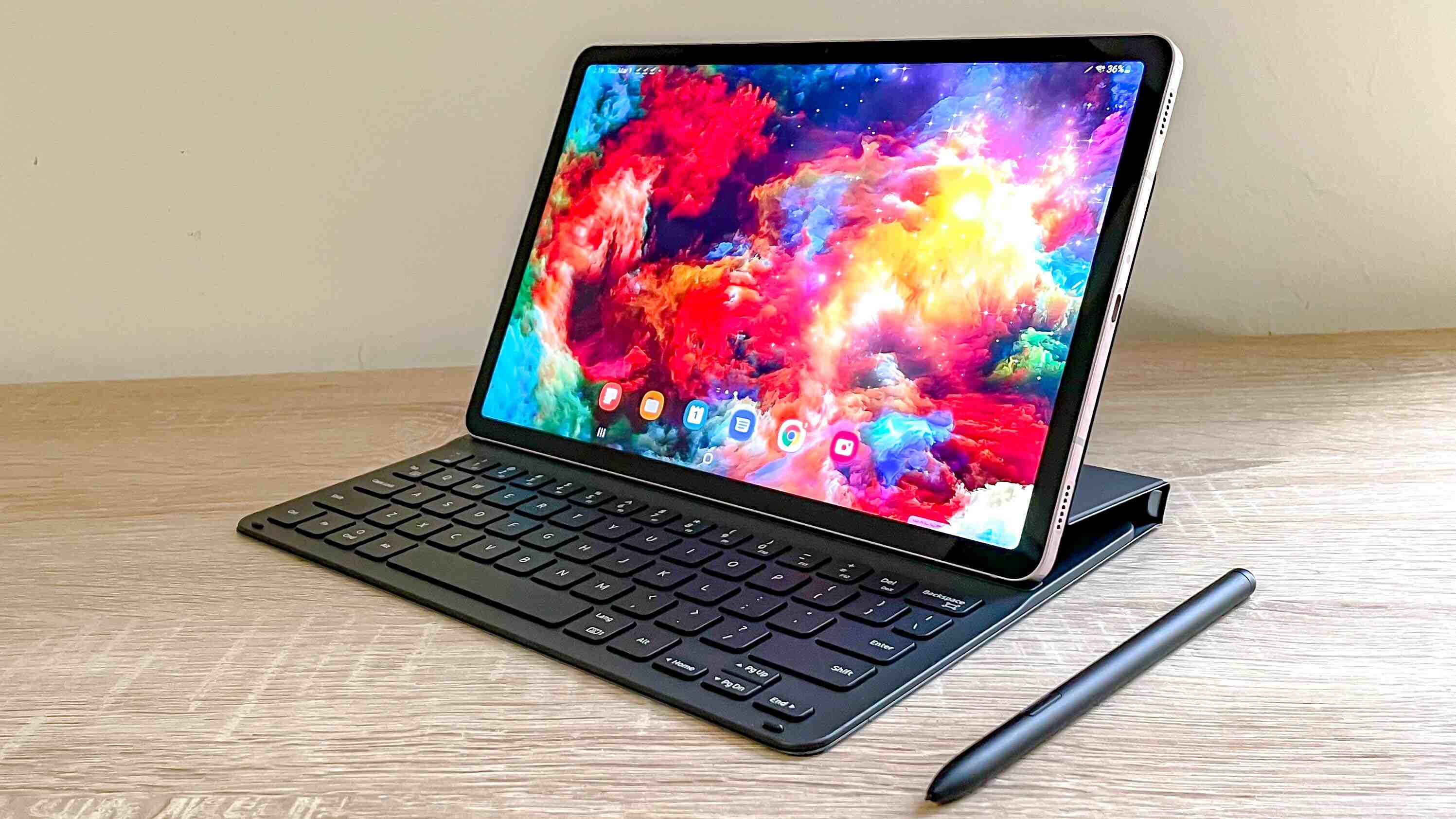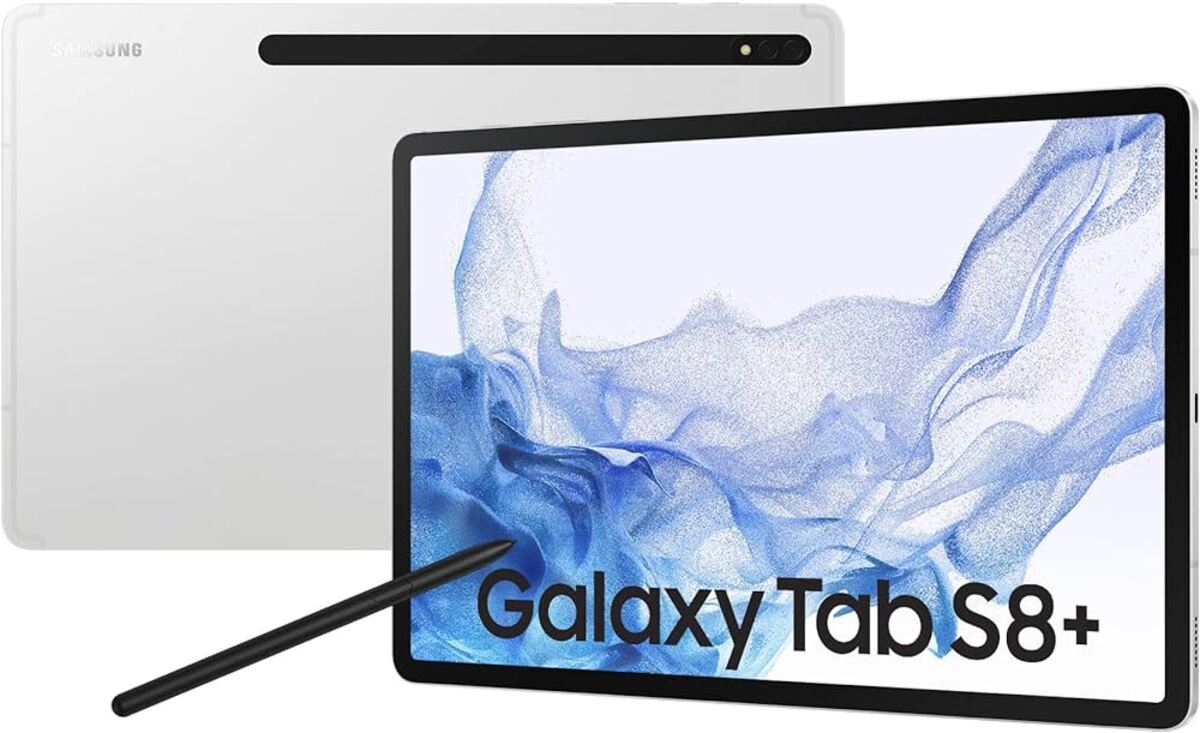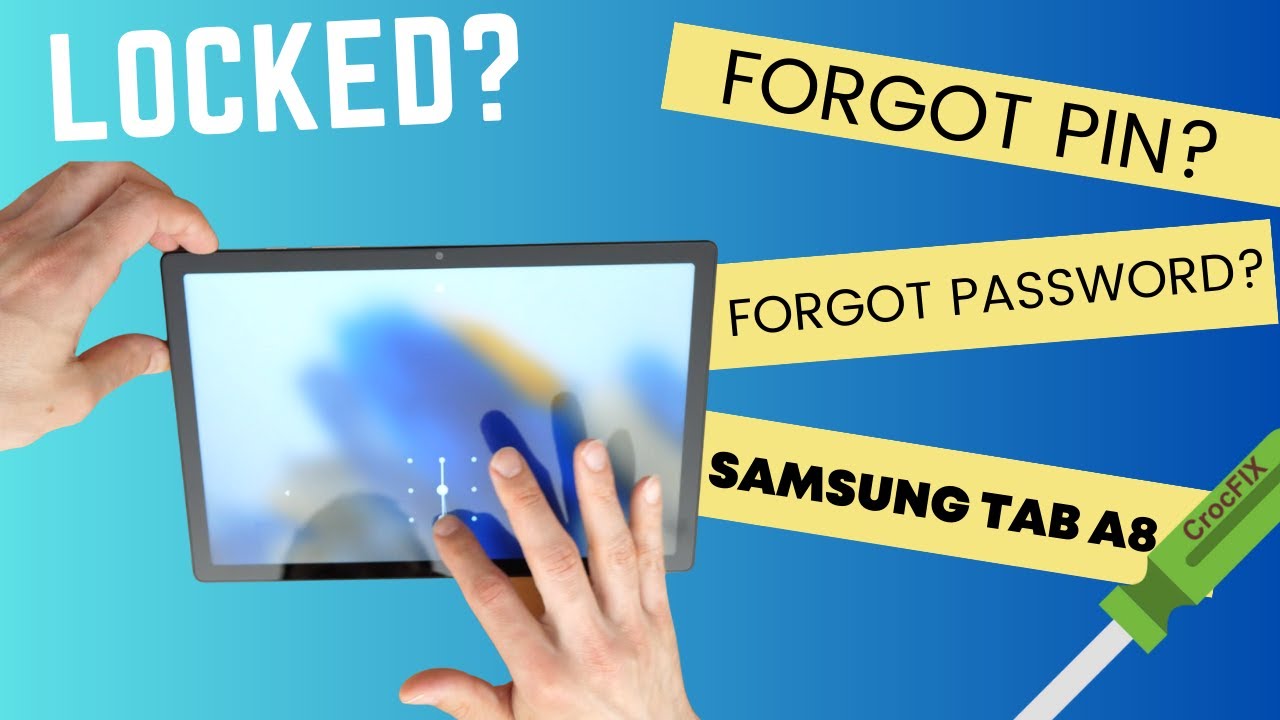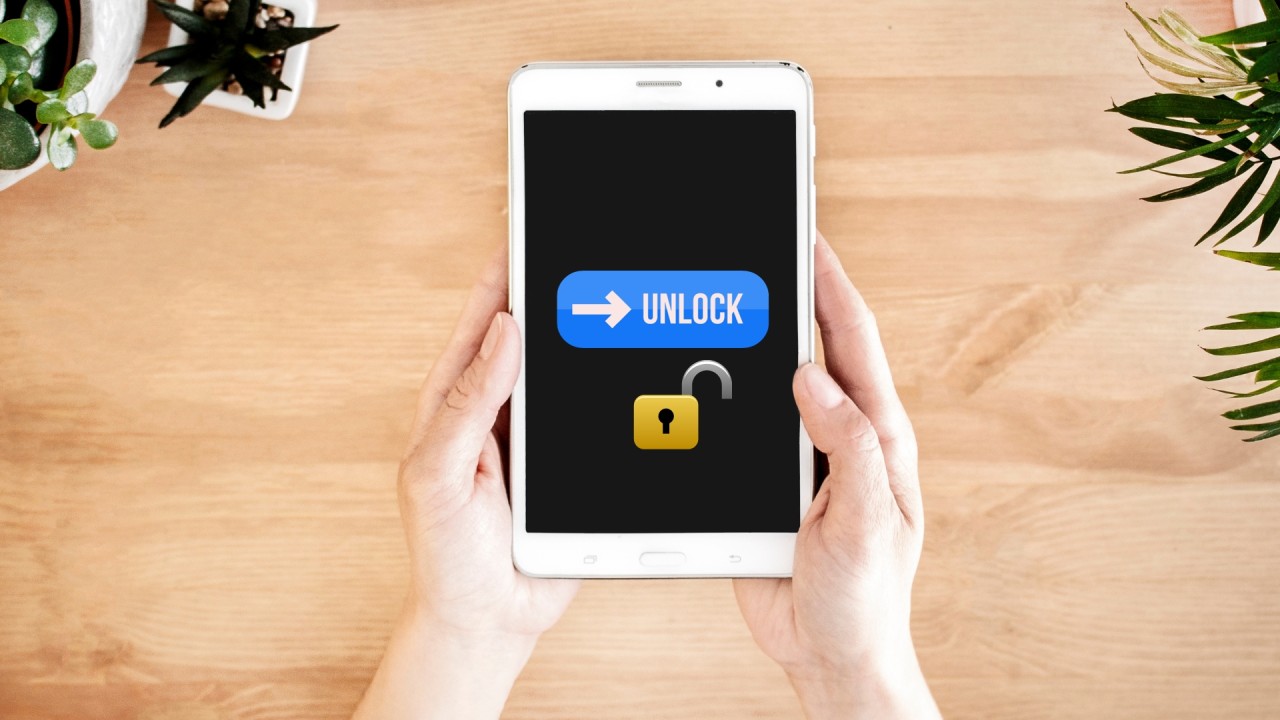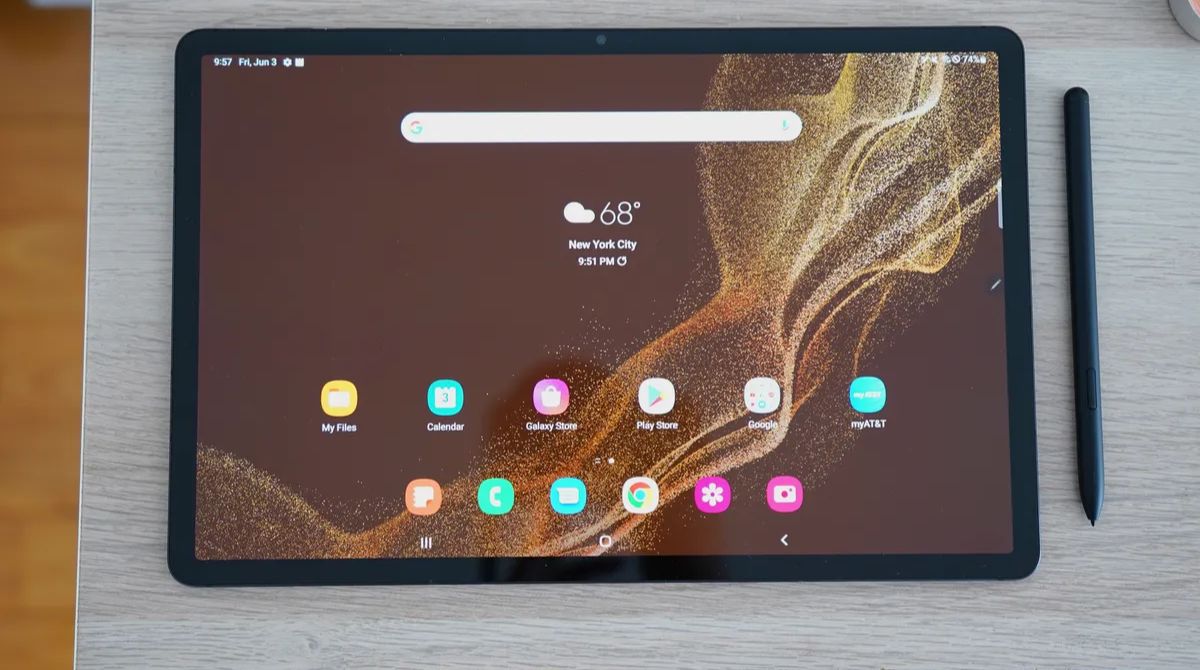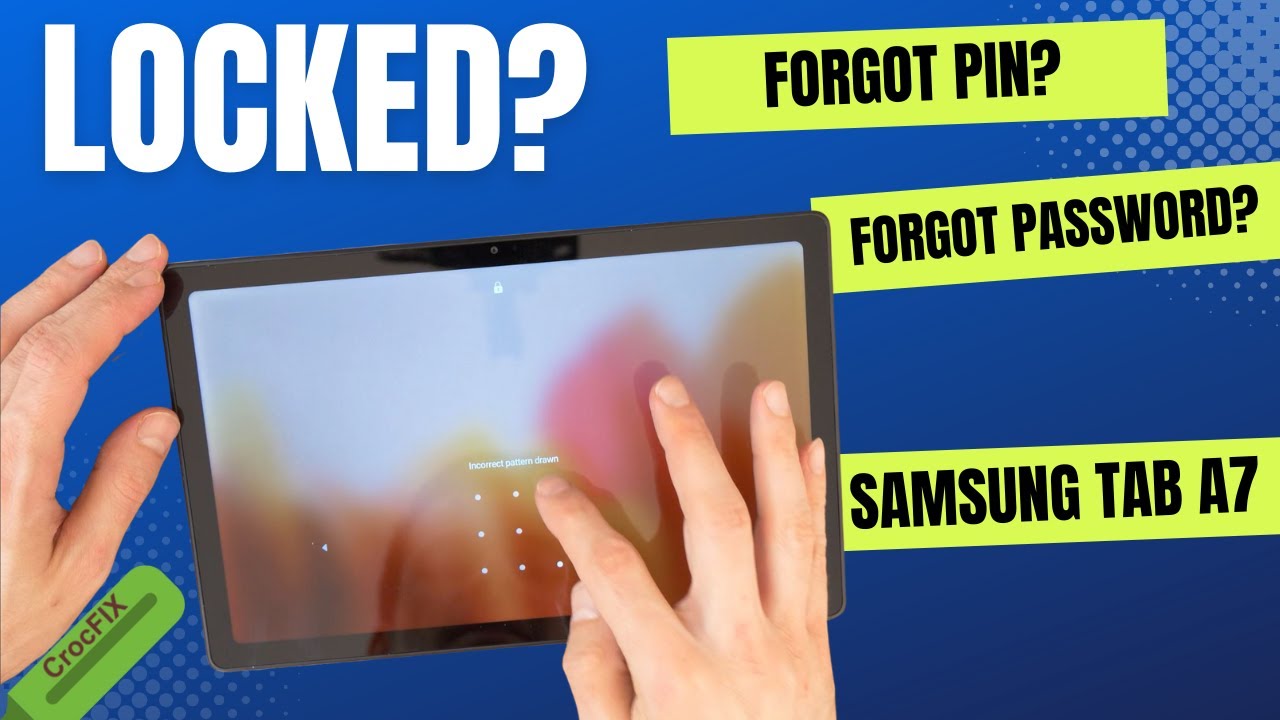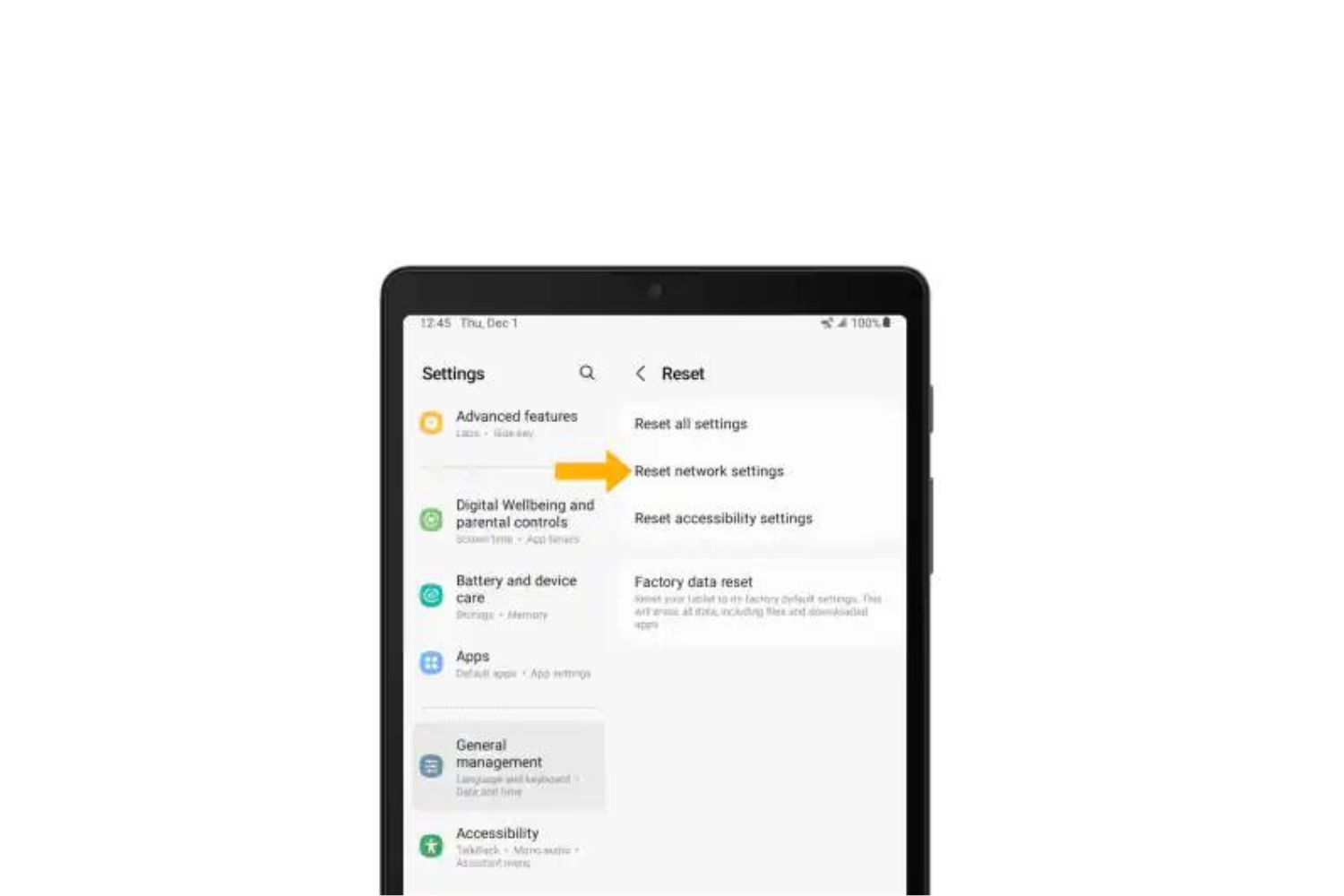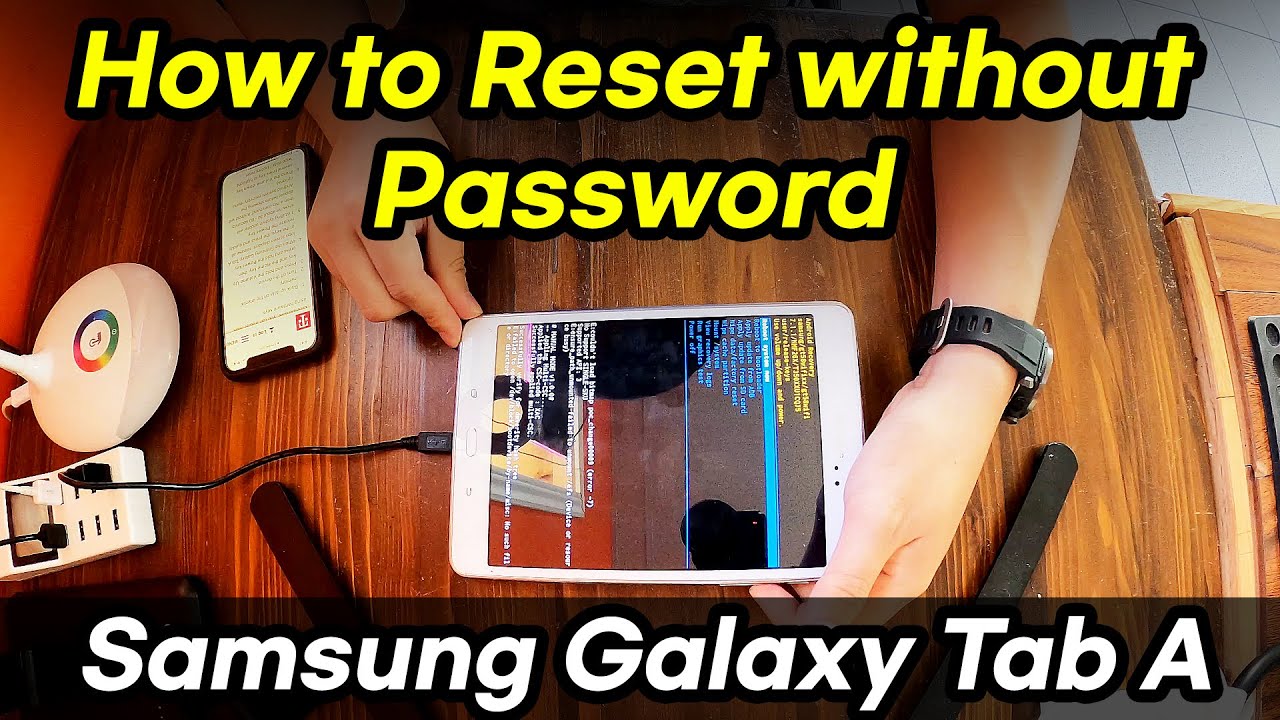Introduction
Welcome to the world of Samsung tablets, where convenience and versatility meet. Samsung tablets are known for their sleek design, powerful performance, and a wide range of features that cater to both productivity and entertainment purposes. Whether you’re a student, professional, or simply someone who enjoys staying connected on the go, a Samsung tablet can be your ideal companion.
In this article, we’ll guide you through the essential steps of using your Samsung tablet. From setting it up to navigating the home screen, connecting to Wi-Fi, adjusting settings, installing apps, and utilizing the Samsung S Pen, we’ll cover everything you need to know to make the most out of your device.
With a Samsung tablet, you can browse the internet, send and receive emails, capture stunning photos and videos, organize your files and folders, play games, and enjoy multimedia content. We’ll provide you with tips and tricks to manage your battery life, as well as troubleshoot common issues that you may encounter along the way.
Whether you own a Samsung Galaxy Tab S7, Tab A, or any other model, the principles discussed in this article will apply to most Samsung tablets. So, let’s dive in and uncover the endless possibilities that await you with your Samsung tablet.
Getting Started
Before you start exploring the features of your Samsung tablet, there are a few initial steps you need to follow to ensure a smooth experience. Let’s get started:
- Unboxing: Carefully remove the tablet from its packaging, along with any accessories such as the charging cable, adapter, and user manual.
- Charging: Connect the charging cable to the tablet and plug the adapter into a power source. Let your tablet charge fully before proceeding.
- Powering on: Press and hold the power button until the Samsung logo appears on the screen. Follow the on-screen instructions to set up your tablet.
- Language and region: Choose your preferred language and region settings. This will impact the language displayed on your tablet and may affect certain features, such as region-specific apps and content.
- Google account: If you have a Google account, sign in to it on your tablet. This will enable you to access Google services, such as the Play Store and Gmail. If you don’t have a Google account, you can create one during the setup process.
- Security: Set up a secure lock screen method, such as a PIN, pattern, or fingerprint. This will help protect your tablet and personal information from unauthorized access.
- Backup: Configure automatic backups to safeguard your data. This can be done by going to Settings > Accounts and Backup > Backup and Restore.
- Software updates: Check for any available software updates and install them. These updates often include bug fixes and new features that enhance your tablet’s performance.
Once you’ve completed these initial steps, you’re ready to dive into the world of your Samsung tablet. The next sections will guide you through the various features and functions, helping you make the most of your device.
Setting Up Your Samsung Tablet
Setting up your Samsung tablet is a crucial step to unlock its full potential and tailor it to your preferences. Let’s walk through the essential settings and configurations:
- Display and brightness: Adjust the brightness level to your liking by swiping down from the top of the screen and locating the brightness slider. You can also enable features like Night Mode to reduce eye strain in low-light conditions.
- Sound: Customize the audio settings by going to Settings > Sounds and Vibrations. Here, you can adjust the volume levels, enable or disable vibration feedback, and choose notification sounds.
- Wallpaper: Personalize your tablet’s home screen by setting a wallpaper. You can choose from pre-installed options or use your own photos.
- App permissions: Manage the permissions granted to apps by going to Settings > Apps. Here, you can review and modify which apps have access to specific features, such as your camera, contacts, or location.
- Accounts and sync: Sync your existing accounts, such as Google, Microsoft, or social media accounts, to access your emails, calendars, and contacts seamlessly. You can configure sync settings in the Accounts section of the Settings app.
- Security: Enhance the security of your tablet by configuring additional security measures. This can include setting up a fingerprint or facial recognition lock, enabling secure folder functionality, and activating Find My Mobile for device tracking and remote locking.
- Language and input: Customize the language and keyboard settings to ensure optimal typing experience. You can add multiple languages, enable autocorrect, and adjust keyboard layouts in the Language and Input section of the Settings app.
- Date and time: Set the correct date and time on your tablet to ensure accurate scheduling and time-based functionalities.
- Accessibility: Explore the accessibility options to accommodate your unique needs. This can include features like magnification gestures, color inversion, or text-to-speech functionality.
By configuring these settings according to your preferences, you’ll have a personalized and optimized Samsung tablet experience. Take your time to explore each setting category and make adjustments as needed to tailor the device to your liking.
Navigating the Home Screen
The home screen of your Samsung tablet serves as the central hub for accessing apps, widgets, and other features. Understanding how to navigate the home screen will allow you to efficiently use your tablet. Here’s a guide to help you get started:
App icons: The home screen is typically populated with app icons representing the various applications installed on your tablet. Simply tap on an app icon to open the corresponding app. You can arrange and customize the app icons by long-pressing on an icon and then dragging it to your preferred location on the screen.
App folders: To keep the home screen organized, you can group similar apps into folders. To create a folder, long-press on an app icon and then drag it onto another app icon. This will create a folder containing both apps. You can also give the folder a name for easy identification.
Widgets: Widgets are interactive elements that provide quick access to certain app functions or display information. They can be placed on the home screen for easy access. To add a widget, long-press on an empty space on the home screen, select “Widgets,” and choose from the available options. Once added, you can resize, move, or remove widgets as needed.
App drawer: The app drawer contains all the installed apps on your tablet. To access the app drawer, look for the app icon, usually located at the bottom center of the home screen. Tap on it to open the app drawer, where you can scroll vertically to view all your apps. You can also search for specific apps by using the search bar at the top of the app drawer.
Home screen panels: The home screen may consist of multiple panels or screens, allowing you to place different app icons, widgets, or folders on each panel. You can swipe left or right to navigate between the panels. This allows you to organize your apps and widgets across multiple screens.
Customization options: Samsung tablets offer various customization options to personalize your home screen. This includes changing the wallpaper, adjusting the grid size to accommodate more or larger app icons, or enabling features like “screen rotation” to switch between portrait and landscape orientations.
By familiarizing yourself with these navigation features, you’ll be able to efficiently access your apps, widgets, and other features on your Samsung tablet’s home screen. Take some time to organize and personalize your home screen to create a layout that suits your preferences and enhances your productivity.
Connecting to Wi-Fi
Connecting your Samsung tablet to a Wi-Fi network is essential for accessing the internet, downloading apps, streaming media, and much more. Follow these steps to connect to Wi-Fi:
- Open Settings: Swipe down from the top of the screen to access the notification panel and tap on the gear icon to open the Settings app.
- Wi-Fi settings: In the Settings app, locate and tap on the “Wi-Fi” option. This will display a list of available Wi-Fi networks.
- Select a network: Select the Wi-Fi network you want to connect to from the list. If the network requires a password, you’ll be prompted to enter it. Make sure to enter the correct password, as it is case-sensitive.
- Connect: Once you’ve entered the password, tap on the “Connect” button to establish a connection with the selected Wi-Fi network.
- Connected: After a successful connection, your tablet will display a Wi-Fi icon in the status bar at the top of the screen. This indicates that you are connected to the internet via Wi-Fi.
It’s important to note that if you’re connecting to a public or shared Wi-Fi network, you may be required to agree to terms and conditions or enter additional login information before gaining full access.
In case you encounter any issues with connecting to Wi-Fi, here are a few troubleshooting tips:
- Ensure that your Wi-Fi router is powered on and functioning properly.
- Check if you are within range of the Wi-Fi network and that the signal strength is strong.
- Restart your tablet and try connecting to the Wi-Fi network again.
- If the problem persists, try forgetting the network in your Wi-Fi settings and then reconnecting to it.
- Consider resetting the network settings on your tablet by going to Settings > General Management > Reset > Reset Network Settings. Note that this will remove all saved Wi-Fi networks, so you’ll need to reconnect to them manually.
By following these steps and troubleshooting tips, you’ll be able to connect your Samsung tablet to a Wi-Fi network and enjoy seamless internet connectivity.
Adjusting Settings
Adjusting the settings on your Samsung tablet allows you to customize the device to suit your preferences and enhance your user experience. Here are some key settings that you can explore:
- Display: Customize the display settings, including brightness, screen timeout, font size, and blue light filter. You can access these options by going to Settings > Display.
- Sound: Adjust the sound settings to your liking, such as volume levels, ringtone selection, and vibration settings. These options are available in the Settings app under Sounds and Vibrations.
- Notifications: Manage how your tablet notifies you of incoming notifications for apps, calls, and messages. You can choose notification sounds, enable or disable notification pop-ups, and set notification priorities in Settings > Notifications.
- Storage: Check your tablet’s storage usage and manage the storage settings. This includes clearing cache files, optimizing storage, and managing downloaded files. Navigate to Settings > Storage to access these options.
- Battery: Maximize your tablet’s battery life by adjusting power saving settings, optimizing app usage, and tracking battery usage. These options can be found in Settings > Battery.
- Security: Enhance the security of your tablet by configuring settings such as lock screen methods, biometrics, secure folder, and permissions for apps. These options are available in Settings > Security.
- Privacy: Protect your privacy by managing app permissions, location settings, and privacy-related options. This includes controlling which apps have access to your location, contacts, and other personal data. Navigate to Settings > Privacy for these settings.
- Accessibility: If you have specific accessibility needs, Samsung tablets offer a range of accessibility settings. These include options like text-to-speech, high contrast mode, color inversion, and more. Access these settings in Settings > Accessibility.
- Language and input: Customize the language, keyboard, and input settings on your tablet. This includes choosing keyboard layouts, enabling predictive text, and adding additional languages. These options can be found in Settings > Language and Input.
- Backup and restore: Set up automatic backups for your tablet data, including app data, settings, and photos. You can also restore your tablet from a previous backup if needed. Access these options in Settings > Accounts and Backup > Backup and Restore.
By exploring and adjusting these settings according to your preferences, you can optimize your Samsung tablet’s performance, security, and usability. Take your time to navigate through the various settings categories and make adjustments as needed to create a personalized and tailored experience.
Installing Apps
One of the great advantages of owning a Samsung tablet is the ability to install a wide range of apps that can enhance your productivity, entertainment, and overall user experience. Here’s a step-by-step guide on how to install apps on your Samsung tablet:
- Google Play Store: On your tablet’s home screen, locate the Google Play Store app, which is represented by a white shopping bag icon with a colorful triangle. Tap on it to open the Play Store.
- Search or browse: Use the search bar at the top of the Google Play Store to search for a specific app or browse through different categories to discover new apps.
- Select an app: Once you’ve found an app you want to install, tap on its icon to view more details, including the app’s description, reviews, and screenshots.
- Install the app: To install the app, tap on the “Install” button. Review the permissions requested by the app, and if you agree, tap on “Accept” to proceed with the installation. The app will then start downloading and installing on your tablet.
- App permissions: Some apps may require certain permissions to function properly. These permissions can include access to your camera, contacts, location, or other features. Make sure to read and understand the permissions requested by the app before granting them.
- Managing app updates: It’s important to keep your installed apps updated to benefit from bug fixes, security patches, and new features. By default, your tablet will automatically update apps when connected to Wi-Fi. However, you can manage app updates manually by going to the Play Store app, tapping on the menu icon (three horizontal lines), and selecting “My apps & games.”
In addition to the Google Play Store, Samsung tablets also come preloaded with the Galaxy Store, which offers a selection of apps optimized for Samsung devices. You can access the Galaxy Store by tapping on its icon on the home screen and following a similar process to install apps.
Remember to explore both the Google Play Store and the Galaxy Store to find the apps that best suit your needs and preferences. From productivity tools to games, social networking apps to entertainment services, the app stores offer a vast selection of options to enhance your tablet experience.
Using the Samsung S Pen
The Samsung S Pen is a powerful tool that sets Samsung tablets apart from others. It allows for precise and intuitive input, making it ideal for note-taking, drawing, and various creative tasks. Here’s a guide on how to use the Samsung S Pen effectively:
- S Pen functionality: The S Pen can perform a wide range of functions, including writing, drawing, selecting text, navigating through menus, and more. It can also be used as a remote control for certain apps and features.
- S Pen placement: Depending on the model of your Samsung tablet, the S Pen may either be stored within the tablet itself or in a separate slot. Make sure to familiarize yourself with the placement of the S Pen and keep it safe when not in use.
- Removing the S Pen: If your tablet has a built-in S Pen, simply press the end of the S Pen to release it from its compartment. If it is stored externally, gently pull it out from its slot.
- Writing and drawing: The S Pen provides a natural and responsive writing and drawing experience. Use it as you would a regular pen or pencil, applying different levels of pressure to create varying line thicknesses. Experiment with different drawing apps to explore the full potential of the S Pen’s capabilities.
- Air actions (if supported): Some Samsung tablets with S Pen functionality offer air actions, allowing you to control your tablet with gestures. For example, you can navigate through photos in the gallery or control media playback by flicking the S Pen in different directions without touching the screen.
- Smart select: With the S Pen, you can easily select and capture portions of the screen using the Smart Select feature. This can be useful for saving screenshots or extracting text from images.
- Screen-off memo: If your tablet supports it, you can quickly jot down notes on the screen even when it is turned off. Simply remove the S Pen, and the tablet will activate the screen-off memo feature for easy note-taking.
- S Pen settings: Explore the S Pen settings in the tablet’s settings app to customize the S Pen experience. Here, you can adjust settings such as sensitivity, air actions, and button functions according to your preference.
The Samsung S Pen is a versatile tool that enhances productivity, creativity, and convenience on your Samsung tablet. Experiment with its various features and functionalities to get the most out of your S Pen and unlock a whole new level of tablet usage.
Browsing the Internet
Browsing the internet on your Samsung tablet opens up a world of information, communication, and entertainment. With a built-in browser and access to various browser apps, you can easily explore websites, search for information, and stay connected. Here are some tips for browsing the internet on your Samsung tablet:
- Open the browser: Locate the browser app on your tablet. Depending on the model, it may be called Samsung Internet or simply Internet. Tap on the app’s icon to open it.
- Navigating pages: Once the browser is open, you can type a website URL in the address bar at the top of the screen to directly access a specific website. Alternatively, you can perform a search using a search engine by entering keywords in the search bar.
- Tabbed browsing: Use tabbed browsing to open multiple webpages at once. Simply tap on the tab button, usually located on the top right or bottom of the screen, to open a new tab. You can switch between tabs by tapping on them or close them by swiping them off the screen.
- Bookmarks: Save your favorite websites for quick access by bookmarking them. Tap on the bookmark icon in the browser’s toolbar, usually represented by a star or ribbon, to add the current page to your bookmarks. You can organize your bookmarks into folders for easy navigation.
- Incognito mode: If you want to browse privately without saving any history or cookies, open a new incognito tab in the browser. This feature is useful for maintaining privacy, especially on shared devices.
- Zoom and reader mode: Adjust the zoom level of a webpage by pinching or spreading your fingers on the screen. Some browsers also offer a reader mode, which simplifies the page layout for easier reading.
- Synchronize across devices: If you use the same browser on multiple devices, consider signing in to your account to sync your browsing history, bookmarks, and open tabs across all devices. This allows for a seamless browsing experience, even when switching between devices.
- Security precautions: Be cautious while browsing the internet and avoid clicking on suspicious links or downloading files from untrusted sources. Install a reputable antivirus app and keep it up to date to protect your tablet from malware and phishing attempts.
Whether you’re researching, staying up to date with the latest news, shopping online, or simply browsing for fun, the internet on your Samsung tablet offers endless possibilities. Take some time to explore the features and settings of your browser to customize your browsing experience and make the most out of your internet sessions.
Sending and Receiving Emails
Email communication is a vital part of staying connected professionally and personally. With your Samsung tablet, you can easily send, receive, and manage emails on the go. Here’s how to effectively use the email functionality on your tablet:
- Email setup: Open the email app on your Samsung tablet. If you haven’t set up any email accounts yet, follow the on-screen instructions to add your email account. This typically involves entering your email address and password.
- Compose a new email: To write a new email, tap on the compose button, usually represented by a pencil icon or a “+” symbol. Enter the recipient’s email address, subject, and your message. You can also attach files, such as documents or photos, if needed.
- Reply and forward: When you receive an email, you can reply to the sender by tapping on the reply button. If you wish to forward the email to someone else, tap on the forward button. This allows you to share the email content with others.
- Managing folders: Most email apps allow you to create folders to organize your emails. You can create folders for different categories, such as work, personal, or specific projects. To manage folders, look for the menu icon or the settings option in your email app and navigate to the folder management options.
- Sorting and searching: To quickly find specific emails, use the search function in your email app. You can search by sender, subject, or keywords from the email content. Additionally, email apps often provide sorting options, allowing you to arrange your emails by date, sender, or other criteria.
- Attachments: If you need to attach files to an email, tap on the attachment icon within the compose window. You can then select files from your tablet’s storage or cloud storage services, such as Google Drive or Dropbox.
- Email signatures: Customize your email signatures to add a professional touch to your email messages. You can include your name, job title, contact information, or other relevant details. Look for signature settings within your email app to create and manage your email signature.
- Notifications: Set up email notifications to stay informed about new messages. You can customize notification preferences, such as sound notifications, vibrations, or pop-up alerts, depending on your preference. These options are usually found within the settings or notification settings of your tablet.
- Email security: Protect your email account by applying strong passwords, enabling two-factor authentication, and being cautious of phishing attempts or suspicious email attachments. Be mindful of the information you share via email and avoid clicking on unknown links.
With the email functionality on your Samsung tablet, you can stay connected and manage your emails efficiently. Take advantage of the features and settings offered by your email app to customize your email experience and ensure seamless communication.
Taking Photos and Videos
Your Samsung tablet is equipped with powerful cameras that allow you to capture stunning photos and videos. Whether you want to document memorable moments, snap professional-looking photos, or create captivating videos, here’s how to make the most of the camera features on your tablet:
- Access the camera app: Locate the camera app on your tablet. It is usually represented by a camera icon. Tap on the icon to open the camera app.
- Camera modes: Explore the different camera modes available in your tablet’s camera app. From auto mode for quick and easy point-and-shoot photos to professional mode for advanced control over settings, there are multiple modes to suit your needs.
- Focus and exposure: Before capturing a photo or video, ensure proper focus and exposure. Tap on the screen at the desired focal point to adjust the focus. You can also slide your finger up or down to adjust the exposure level manually.
- Shutter button: The shutter button is used to capture photos and start/stop video recording. It is usually located either on the screen or as a physical button on the tablet’s frame. Tap the shutter button to take a photo, and press and hold it to record a video. Some camera apps also allow you to take photos while recording a video.
- Settings: Familiarize yourself with the camera settings to modify resolution, aspect ratio, white balance, and other parameters. Access these settings through the camera app’s menu or settings icon. Adjust the settings to suit your preferences and the specific capture scenario.
- Camera filters and effects: Enhance your photos with built-in camera filters and effects. Experiment with different filters, such as black and white, sepia, or vivid colors, to give your photos a unique look. These options are often available in the camera app’s settings or by tapping on a filter icon.
- Front and rear cameras: Most Samsung tablets feature both front and rear cameras. The rear camera typically offers higher resolution and more advanced features, while the front camera is ideal for selfies and video calls. Switch between cameras using the camera app’s toggle button or by swiping on the screen. Some camera apps even offer a dual-camera mode, which utilizes both front and rear cameras simultaneously.
- Editing and sharing: After capturing photos and videos, take advantage of built-in editing tools to enhance your creations. Adjust brightness, contrast, and other parameters or apply filters to give your photos a personal touch. Once edited, share your photos and videos directly from the camera app to social media platforms, messaging apps, or cloud storage services.
- Storage and backup: Ensure you have sufficient storage on your tablet to store photos and videos. Consider transferring them to a computer or a cloud storage service periodically to free up space and keep them safe. It’s also advisable to enable automatic backups to cloud storage platforms for extra security.
With the camera features on your Samsung tablet, you have the tools to capture amazing photos and videos. Experiment with different settings, modes, and editing options to unleash your creativity and document the special moments of your life.
Organizing Your Files and Folders
Keeping your files and folders organized on your Samsung tablet can save you time and make it easier to find and access your documents, photos, and other files. Here are some tips to help you effectively manage and organize your files:
- File Manager: Your Samsung tablet comes with a built-in File Manager app, which allows you to view and manage your files and folders. Open the File Manager app to start organizing your files.
- Create folders: Use folders to categorize and group related files. You can create folders for different projects, subjects, or file types. Within the File Manager app, tap the “New folder” or “+” icon to create a new folder. Give the folder a descriptive name to easily identify its contents.
- Move or copy files: To keep your files organized, you can move or copy them to specific folders. Long-press on a file to select it, then tap the “Move” or “Copy” icon (usually represented by a file folder or two pages) and choose the destination folder where you want to move or copy the file.
- Rename or delete files: If you want to change the name of a file or delete it, long-press on the file and select the appropriate option from the menu. Be careful when deleting files, as they may be permanently removed from your tablet.
- Sort and filter: Most file managers offer options to sort and filter files based on criteria such as name, date modified, or file type. Use these options to arrange your files in a way that makes sense to you and quickly locate specific files.
- Cloud storage: Consider utilizing cloud storage services, such as Google Drive or Dropbox, to store and organize your files across multiple devices. These services allow you to access your files from anywhere and provide additional backup and syncing options.
- Tags and labels: Some file managers offer the ability to assign tags or labels to files. Use this feature to add descriptive tags or labels to files, making it easier to search for them later.
- Archive and compress files: If you have multiple files that you want to keep together or reduce file size, consider archiving or compressing them. This can help save storage space and keep related files organized.
- Regular file maintenance: Periodically review and declutter your files and folders. Delete unnecessary files, archive old files that you don’t frequently access, and reorganize your folders if needed. This ensures that your files remain organized and your tablet’s storage stays optimized.
By applying these file organization tips and utilizing the features of the File Manager app, you can keep your files and folders organized on your Samsung tablet, making it easier for you to find and manage your important documents and media files.
Playing Games and Multimedia
Your Samsung tablet is not just a productivity tool; it’s also a great device for entertainment and gaming. With a large high-resolution display and powerful processing capabilities, you can enjoy a wide range of games and multimedia on your tablet. Here are some tips for playing games and enjoying multimedia on your Samsung tablet:
- Game and multimedia apps: Explore the Google Play Store or the Galaxy Store to discover and install games and multimedia apps that suit your interests. From action-packed games to streaming platforms for movies and music, there’s something for everyone.
- Optimized gaming: Samsung tablets often come with features that enhance the gaming experience. Look for the “Game Launcher” app, which provides a dedicated gaming environment and allows you to customize game settings, control notifications, and record gameplay.
- Game controller support: If you prefer a more immersive gaming experience, connect a game controller to your tablet via Bluetooth or USB. Many popular game titles support external controllers for increased precision and comfort.
- Streaming and media apps: Install popular streaming apps like Netflix, YouTube, or Spotify to enjoy a wide variety of movies, TV shows, videos, and music on your tablet. These apps usually offer personalized recommendations and features like offline viewing or curated playlists.
- External media support: Your Samsung tablet may have expandable storage via a microSD card slot or support for USB OTG (On-The-Go). This allows you to connect external storage devices like flash drives or hard drives to access and play multimedia files directly from these devices.
- Screen mirroring and casting: If you want to enjoy games or multimedia on a bigger screen, consider screen mirroring or casting. You can connect your tablet to a compatible TV or a streaming device like Chromecast to mirror your tablet’s screen or stream content wirelessly.
- Customize audio settings: Adjust the audio settings on your tablet to enhance your gaming or multimedia experience. In the Settings app, explore options like sound equalizer settings, Dolby Atmos, or different audio modes.
- Game and app communities: Join online communities and forums dedicated to your favorite games or multimedia apps. These communities are great for sharing tips, tricks, and recommendations, as well as connecting with fellow enthusiasts.
- Don’t forget to take breaks: While games and multimedia can be entertaining, it’s essential to take regular breaks and maintain a healthy balance. Prolonged screen time can strain your eyes and affect your overall well-being, so remember to take frequent breaks and practice other activities.
With a wealth of gaming and multimedia options available, your Samsung tablet provides endless entertainment possibilities. Whether you’re into casual gaming, streaming movies, or enjoying your favorite music, your tablet has the power and features to deliver an immersive experience.
Managing Battery Life
The battery life of your Samsung tablet is crucial for ensuring uninterrupted usage throughout the day. To help you maximize the battery life and avoid unexpected disruptions, here are some tips and tricks to effectively manage the battery on your tablet:
- Adjust screen brightness: Lower the screen brightness or enable auto-brightness to reduce the amount of power consumed by the display. You can adjust the brightness level in the quick settings panel or through the Settings app.
- Optimize sleep settings: Configure your tablet’s sleep or screen timeout settings to turn off the display after a shorter duration of inactivity. This prevents unnecessary battery drainage when the tablet is idle.
- Manage background apps: Close or disable unnecessary background apps that may be consuming battery power. You can do this by accessing the Recent Apps menu and swiping away the apps you’re not currently using or by going to Settings > Apps and force stopping or disabling specific apps.
- Use Wi-Fi instead of mobile data: When possible, connect to a Wi-Fi network instead of using mobile data. Wi-Fi typically consumes less power than cellular data, helping to conserve your tablet’s battery life.
- Turn off unnecessary wireless connections: When not in use, toggle off Wi-Fi, Bluetooth, and GPS as these connections can drain your battery. Use the quick settings panel or go to the Settings app to manage these settings.
- Enable power-saving mode: Activate the built-in power-saving mode on your tablet to limit background activities, reduce screen brightness, and optimize power settings. This mode can be accessed through the Settings app, usually under the Battery or Device Care section.
- Reduce push email intervals: Adjust the frequency at which your tablet checks for new emails or app updates. Increasing the interval time can reduce unnecessary data usage and battery drainage.
- Limit vibration and haptic feedback: Vibration and haptic feedback consume extra power. Consider disabling these features or reducing their intensity in the Sounds and Vibrations settings menu.
- Update apps and software: Keep your tablet’s apps and software up to date as updates often include bug fixes and optimizations that can improve battery efficiency.
- Avoid extreme temperatures: High temperatures can degrade battery performance, so avoid exposing your tablet to direct sunlight or extreme heat. Similarly, extremely cold temperatures can also affect battery life, so protect your tablet from freezing conditions.
Remember that battery life can vary depending on usage patterns, settings, and other factors. It’s always a good idea to have a charger or power bank handy when you’re out and about to ensure you can charge your tablet when needed.
By following these battery management tips, you can optimize the battery life of your Samsung tablet and enjoy longer usage between charges.
Troubleshooting Tips
Encountering issues with your Samsung tablet can be frustrating, but there are often simple solutions to common problems. Here are some troubleshooting tips to help you resolve common issues on your tablet:
- Restart your tablet: Restarting your tablet can resolve many minor issues. Press and hold the power button, and then select “Restart” from the options that appear on the screen.
- Check for software updates: Ensure that your tablet’s software is up to date. Go to Settings > Software Update and tap on “Download and install” if an update is available. Software updates often include bug fixes and performance improvements.
- Clear app cache and data: If an app is misbehaving or crashing, you can clear its cache and data. Go to Settings > Apps, select the problematic app, and tap on “Storage.” From there, you can clear the app’s cache or, if necessary, uninstall and reinstall the app.
- Free up storage space: If your tablet is running slow or experiencing storage-related issues, free up storage space by removing unnecessary files, uninstalling unused apps, or transferring files to cloud storage or an external storage device.
- Reset app preferences: Resetting app preferences can resolve issues related to app permissions or default settings. Go to Settings > Apps > Reset App Preferences and confirm the action.
- Perform a factory reset: If all else fails and your tablet is still experiencing persistent problems, you may need to perform a factory reset. It’s important to note that a factory reset will erase all data on your device, so be sure to back up your important files first. Go to Settings > General Management > Reset > Factory Data Reset and follow the on-screen instructions.
- Contact support: If you’ve tried the above steps and are still experiencing issues, reach out to Samsung support or consult the manufacturer’s website for further assistance. They may have additional troubleshooting steps specific to your tablet model or be able to provide guidance for more complicated issues.
Remember, it’s always a good idea to periodically back up your tablet’s data to avoid losing important files or data in case of any unexpected issues or hardware failures.
By following these troubleshooting tips, you can often resolve common issues on your Samsung tablet and ensure smooth performance and functionality.
Conclusion
Congratulations! You’ve now learned how to use and make the most out of your Samsung tablet. From the initial setup to exploring various features, you are well-equipped to navigate through the digital world with ease and efficiency. Let’s recap what we covered:
We started by introducing the world of Samsung tablets and their sleek design, powerful performance, and wide range of features. We then delved into the essential steps of setting up your tablet, navigating the home screen, connecting to Wi-Fi, adjusting settings, and installing apps.
You also learned about the unique capabilities of the Samsung S Pen and how to utilize it for writing, drawing, and navigating your tablet. Additionally, we explored browsing the internet, sending and receiving emails, capturing photos and videos, organizing files and folders, and enjoying games and multimedia.
We provided tips on managing battery life to optimize usage between charges, and troubleshooting tips to resolve common issues that may arise. These troubleshooting tips, such as restarting your tablet, checking for software updates, and clearing app cache, can help you overcome technical difficulties efficiently.
Remember, as an SEO writer, it’s important to continuously adapt and improve your writing skills. Stay up to date with the latest trends in SEO and digital marketing, and always focus on creating high-quality content that provides value to readers.
Now that you have a strong foundation in using your Samsung tablet and optimizing its various features, it’s time to explore and fully immerse yourself in the endless possibilities at your fingertips. Whether it’s staying productive, enjoying entertainment, or simply staying connected, your Samsung tablet empowers you to do it all.
Embrace the convenience and versatility of your Samsung tablet and keep discovering new ways to make it an indispensable part of your daily life.







